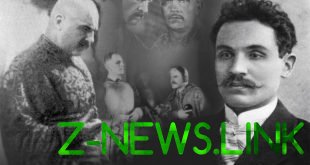 They attributed the “denigration of the socialist way of life”.
They attributed the “denigration of the socialist way of life”.
Group TRIVA is photographers Vladimir Vorobiev, Vladimir Sokolaev and Alexander Trofimov, who worked at the turn of 70-80-ies at the Kuznetsk metallurgical combine (KMK). However, Chronicles the work of the plant among their images are in the absolute minority.
Once they were expelled from the main place of work for the denigration of the socialist way of life, they had to destroy part of the archives, and they become free to pursue photography.
“We took up the camera in free mode was walking down the street, calling it a “free hunt” and having no ultimate goal. Only in this mode I came up with the full film material”, — says Vladimir Nikolaev one of the members of the group.

“Snow coke oven plant”, Coke KMK, November 27, 1979.

“The holiday of Maslenitsa miners”, Novokuznetsk, 1984.

“Filling the ice at the stadium “metallurg””, Novokuznetsk, February 11, 1984.
Members of TRIVA, never parted with cameras and outside of the plant and working day. As a result, most of the work is the everyday scenes on the streets of Novokuznetsk 80-ies.
The principles, which were shot by photographers of TRIVA, the abandonment of retouching and cropping of the footage. But most importantly — avoiding staged shots. Everything that happens in the frame, is in fact; the man with the camera never tells the heroes how to make it photogenic, and not asking to repeat its loss of the time.

“Solemn registration of the newborn”, the Registrar of the Central district, 1 October 1983.

“Competition Gorprodtorg production gymnastics”, school №62, Novokuznetsk, Siberia. April 10, 1983.
This principle of non-interference was highly unusual for an official Soviet photography, where often even the well-known historical photos (for example, “Victory Banner over the Reichstag”) played in front of the camera.
“In the USSR, 90% of a newspaper photograph was shot like a movie, starting with the selection of props, says the curator Yevgeny Ivanov. — It is necessary to remove the hero-the tractor? Will change it and will deliver near the tractor on which it works, and near the new tractor. The photographer was not a real life, life is what it should be, edited for ideological purposes”.
To abandon the setting and take life as it is, including in difficult conditions (for example, factory halls), photographers TRIVA could including due to the fact that at the turn of 70-80 years they have bred the Japanese “Canons” and the German “Leica”. Answering the questions of the Novosibirsk audience that came to the opening party TRIVA Vladimir Sokolaev told that “Zenith” and other Soviet cameras a lot of shown to remove would have failed, and indeed the acquisition of “Canon” became the group’s turning point.

“Electrician in the coke oven plant”, KMK, Novokuznetsk, 1980.
This photo is slightly absurdist and surreal — looks designed but it isn’t. It shows the master, who came into the shop KMC to repair the clock, but at the coke oven battery sometimes produces gas, from which the person becomes drunk. Drunken master came out into the street to recover in the fresh air, and it was taken by a passing photographer Vladimir Vorobyov.

“Opal chicken carcass”.
A complete rejection dusting of reality in the end and terminated the official existence of the group of TRIVA. It was officially registered in 1981, managed to take part in 19 exhibitions (including foreign), but in early 1982 party officials and KGB suspected in the style of TRIVA denigration of the socialist way of life.

“March of the gentlemen on a visit”, Novokuznetsk, 1980.
TRIVA did not chase bright external effects. Many photographers have a good idea how immediately impress the viewer, and turn a photo into a circus, which of the above climb. TRIVA from the same simple stories in simple language. But this simplicity, as in Chekhov, is simplicity, behind which hides a depth and purity and the capacity of language, which need to learn over the years.

“Passing”, Novokuznetsk, may 1, 1983.
These pictures are masterpieces, because they are not about effects, but about human life, about the questions of life. For example, “passing” — an ordinary situation at the demonstration turns into a parable. And technically the story is communicated clearly and accurately, there is nothing superfluous, everything is working on the same idea.

“The corridor of the hospital. Kefir after birth”, 1st clinical hospital, Novokuznetsk, Siberia, June 29, 1981.

“Bookstore. Department of rare books”, Kirov street, Novokuznetsk, Siberia. 21 Jan 1983.
In addition to artistic significance, Dating back to up to date, photos of TRIVA is valuable as a historical document: “For us, street photography is the only way freely to remove. We actually recorded the history of their city. There was no other way. We will not start, have not been invited. Our motivation was — shot of our history, what is going on than breathing city”, — said V. Sokolaev.

“A wreath for the dog”. The children came to school and saw a dog, which decided to bestow the flowers.
The photos of the “Manifesto of TRIVA” is really a lot that is sweeping across the social network wave of nostalgia under the slogans “we had a happy childhood without iPhones, but with deep puddles, sand pits and scoop”.

“Game, “gum”, the yard on the street in Togliatti, may 9, 1985.
Pictures allow you to dive into this puddle (or sandbox) childhood head: if you found the time even in prometeisti, a couple of hundred photos in an amazing way to intensify what seems to be sealed and put away in the archives of the layers of memory.

“One in the bathroom.” While wearing dry pants for one child, the other waits for their turn in the bathroom. Baby house No. 2, Novokuznetsk, may 29, 1981.
On the other hand, there is much in these photos is able to sober slightly nostalgic. Someone noticed that such images could serve as accusatory documents in a hypothetical process against the state called the Soviet Union.

“Smoke on the gas cylinder”, a Russian play.
But in General group photos are not perceived as “Chernukha” — rather inspire and cause tenderness to the people.
And most importantly — work like a time machine: the spectator walks across Siberian town of thirty years ago — sometimes he spies on the domestic scene unnoticed, sometimes encounters with the inhabitants of the past head-on, and they look at the time traveler suspiciously and curiously.

“People in line”, Novokuznetsk, 1982.
© 2017, paradox. All rights reserved.





